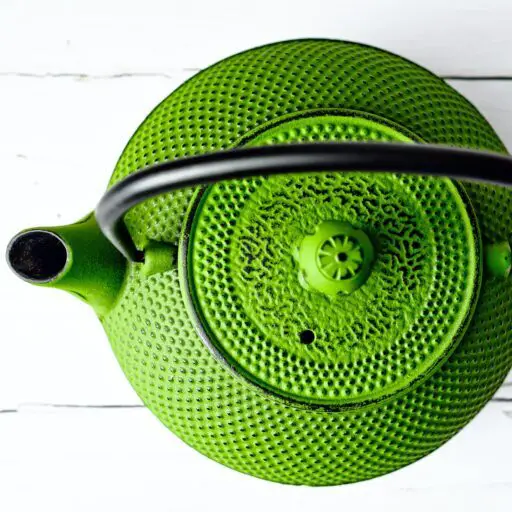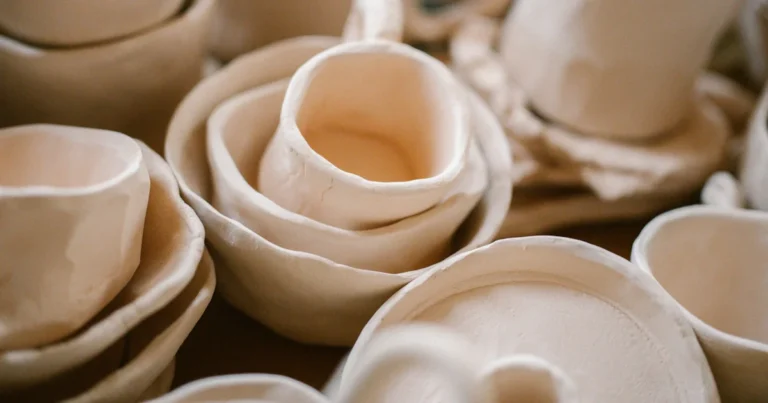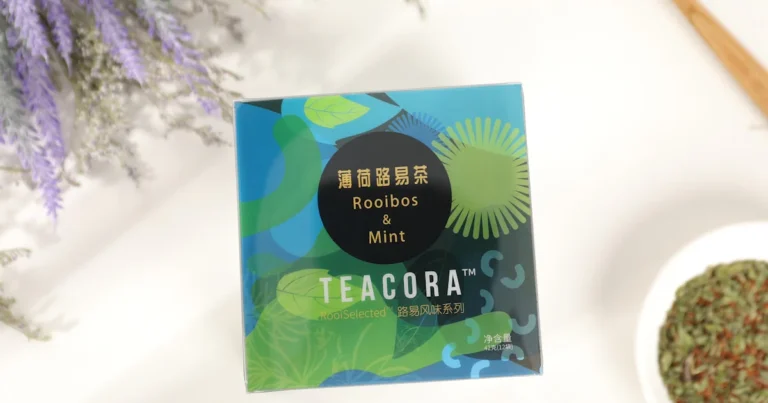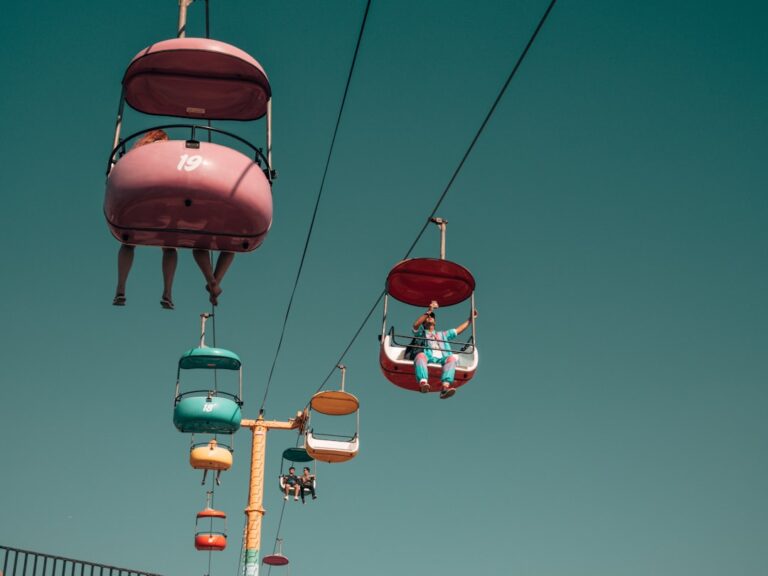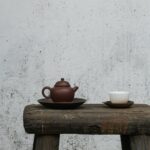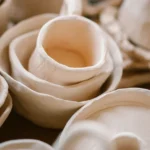Support our educational content for free when you purchase through links on our site. Learn more
What Is the Most Luxurious Tea? Discover 7 Exquisite Gems in 2025 🍵✨
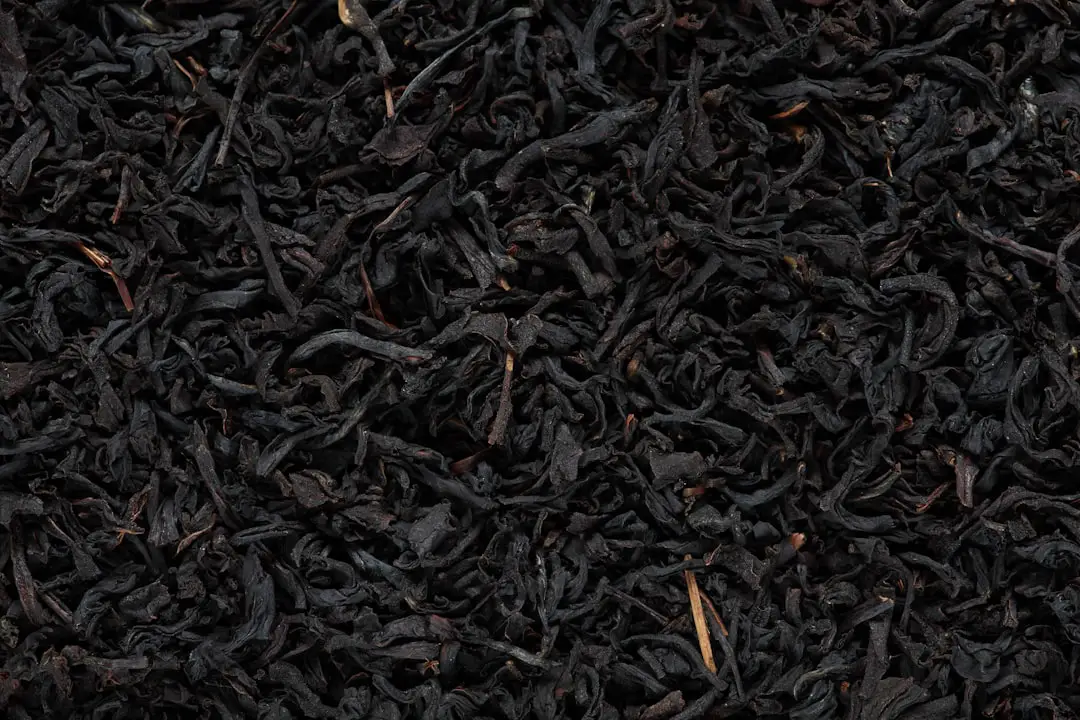
Imagine sipping a tea so rare and revered that a single kilogram can cost more than a luxury car. Sounds like a fantasy? Welcome to the world of luxurious teas, where history, rarity, and craftsmanship blend into an unforgettable sensory experience. From the legendary Da Hong Pao, draped in imperial robes and fetching eye-watering prices, to the delicate umami richness of Japan’s Gyokuro, this article unveils the 7 most luxurious teas you absolutely must know about in 2025.
But luxury tea is more than just price tags and prestige — it’s about savoring stories steeped in centuries of tradition, mastering the art of brewing, and discovering flavors that dance on your palate like a perfectly choreographed symphony. Ready to explore what makes these teas so extraordinary? Keep reading, because the secrets behind these liquid treasures will surprise and delight you.
Key Takeaways
- Luxury teas combine rarity, expert processing, and rich cultural heritage to create unparalleled flavor experiences.
- The 7 most luxurious teas include Da Hong Pao, Tie Guan Yin, Gyokuro, Silver Needle, Pu-erh, Matcha, and Yellow Gold Tea Buds.
- Authenticity matters: Buy from trusted brands like TWG Tea, Mariage Frères, and PAPER & TEA to ensure genuine luxury.
- Brewing luxury tea requires precision and care — water temperature, steep time, and quality teaware make all the difference.
- Sustainable and ethical sourcing is becoming a hallmark of true luxury teas, supporting both the environment and tea farmers.
Ready to indulge?
- 👉 Shop luxury teas on:
- Explore our curated list of 10 Best Luxury Tea Brands to Sip in 2025 ✵ for more inspiration!
Table of Contents
- Quick Tips and Fascinating Facts About Luxurious Teas 🍵✨
- The Rich History and Origins of Luxury Tea Traditions 🌿👑
- Understanding Tea’s Value: What Makes a Tea Truly Luxurious? 💎🍃
- The Legends and Mystique Behind the World’s Most Expensive Teas 📜🫖
- Unveiling Extraordinary Tea Varieties: From Rare Leaves to Unique Processing 🌸🍂
- Top 7 Most Luxurious and Expensive Teas in the World You Must Know 💰🥇
- How to Experience Luxurious Tea Culture Like a True Connoisseur ☕🎩
- The Art of Brewing and Tasting Luxury Teas: Tips from Tea Experts 🎨👅
- Where to Buy Authentic Luxury Teas: Trusted Brands and Sellers 🛍️✅
- Sustainability and Ethical Sourcing in the World of High-End Teas 🌱🌍
- Pairing Luxurious Teas with Food: Elevate Your Tasting Experience 🍰🍵
- Frequently Asked Questions About Luxurious and Expensive Teas ❓🧐
- Conclusion: Why Investing in Luxurious Tea Is Worth Every Sip 🏆☕
- Recommended Links for Tea Lovers and Collectors 🔗🍃
- Reference Links and Further Reading 📚🔍
Quick Tips and Fascinating Facts About Luxurious Teas 🍵✨
Welcome to the world of luxury teas! If you’ve ever wondered what makes a tea truly luxurious, you’re in the right place. At Tea Brands™, where we specialize in helping you Sip and Savor the Finest Tea, we’ve brewed up some quick tips and fascinating facts to get you started on your journey to tea opulence.
Quick Tips for Enjoying Luxurious Tea
- ✅ Look for rarity: The rarest teas often come from ancient bushes or limited harvests.
- ✅ Consider terroir: Just like wine, the soil, climate, and altitude shape the flavor.
- ✅ Mind the processing: Hand-picking, shade-growing, and special fermentation add layers of complexity.
- ✅ Age matters: Some teas like Pu-erh improve and become more valuable with age.
- ✅ Brew with care: Water temperature, steep time, and vessel affect your experience.
Fascinating Facts
- The legendary Da Hong Pao tea can fetch prices over $1 million per kilogram — yes, that’s not a typo!
- Some luxury teas are fertilized with panda dung to create unique flavors and sustainable farming practices.
- The PG Tips Diamond Tea Bag is adorned with 280 diamonds and 18-karat gold, making it a charity auction sensation.
- Gyokuro, Japan’s shaded green tea, is prized for its rich umami and sweetness, cultivated with meticulous care.
Want to dive deeper? Check out our 10 Best Luxury Tea Brands to Sip in 2025 ✵ for a curated list of exquisite teas.
The Rich History and Origins of Luxury Tea Traditions 🌿👑
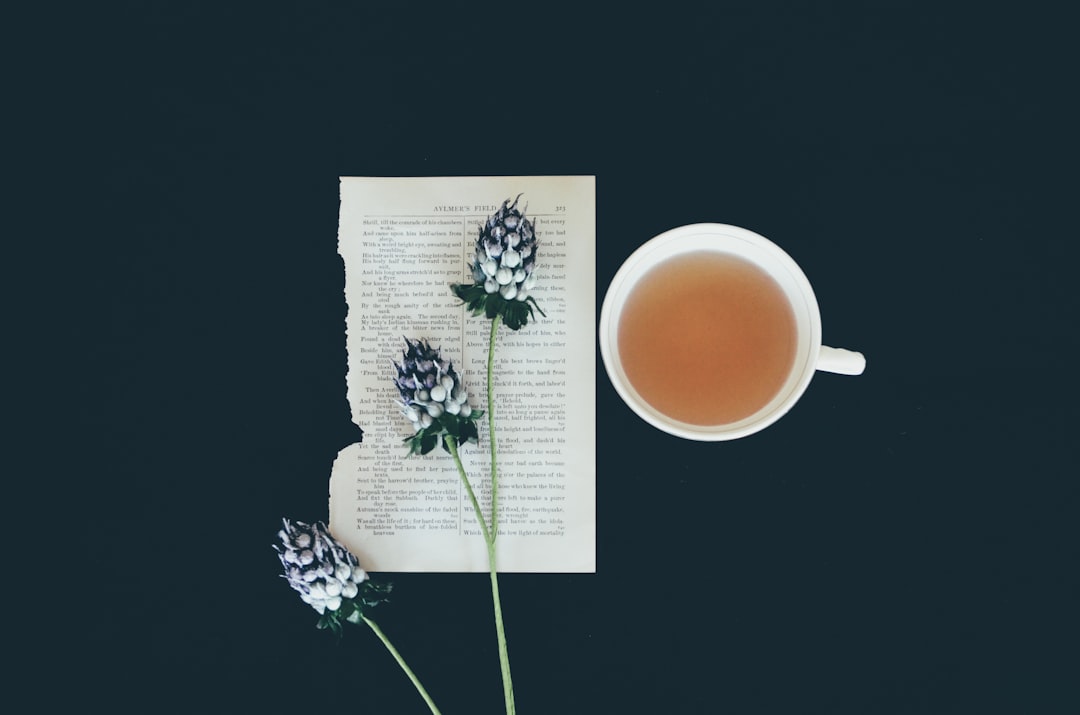
Tea’s journey from humble leaves to luxury status is steeped in legend, culture, and centuries of tradition. Understanding this rich background helps us appreciate why some teas command astronomical prices.
The Ancient Roots of Luxury Tea
Tea drinking dates back thousands of years, with China and Japan as the epicenters of tea culture. The Wuyi Mountains in China, home to the legendary Da Hong Pao, have been cultivating tea since the Ming Dynasty. According to legend, an emperor’s mother was cured by this tea, prompting him to drape his red robe over the bushes — hence the name “Big Red Robe.” This story adds a royal mystique that elevates the tea’s status.
Cultural Significance and Rituals
In Japan, the chanoyu or tea ceremony transforms tea drinking into an art form, emphasizing harmony, respect, and tranquility. The ceremonial preparation of Matcha is a ritual that embodies luxury through mindfulness and precision.
The Role of Geography and Terroir
Just like fine wine, the soil, climate, and altitude (terroir) play a pivotal role in the flavor and rarity of luxury teas. For example, the shaded valleys of Uji, Japan, produce Gyokuro with its signature umami, while the mineral-rich cliffs of Wuyi Mountains impart a unique “rock rhyme” flavor to Da Hong Pao.
For a deep dive into tea history and culture, our Tea Brand Spotlights section is a treasure trove.
Understanding Tea’s Value: What Makes a Tea Truly Luxurious? 💎🍃
So, what exactly makes a tea luxurious? Is it just the price tag, or is there more brewing beneath the surface?
Key Factors Driving Luxury Tea Prices
| Factor | Description | Impact on Luxury Status |
|---|---|---|
| Rarity | Limited harvests, ancient bushes, or unique terroir | ✅ High demand, limited supply |
| Processing | Hand-picking, shade-growing, fermentation, roasting | ✅ Adds complexity and labor cost |
| Age | Some teas improve with aging, like Pu-erh | ✅ Increases flavor depth and value |
| Cultural Heritage | Traditional methods and stories behind the tea | ✅ Adds mystique and exclusivity |
| Flavor Profile | Unique, complex, and balanced taste | ✅ Appeals to connoisseurs |
| Packaging & Presentation | Elegant tins, hand-crafted boxes, and rare tea bags | ✅ Enhances perceived value |
The Role of Handiwork and Expertise
Luxury teas often require skilled artisans who hand-pick only the finest leaves, sometimes only the unopened buds (like Silver Needle white tea). The labor-intensive process can take weeks, involving delicate withering, rolling, and roasting steps.
Terroir and Climate Influence
The microclimate where tea grows influences its flavor profoundly. For example, the misty mountains of Fujian produce the floral and toasty notes of Tie Guan Yin, while Yunnan’s soil yields the earthy richness of Pu-erh.
Want to explore how these factors come together in specific teas? Our Tea Brand Guides offer detailed insights.
The Legends and Mystique Behind the World’s Most Expensive Teas 📜🫖
Luxury teas don’t just taste good — they come with stories that add layers of allure. Let’s sip on some of the most enchanting legends.
Da Hong Pao: The Emperor’s Gift
The story goes that during the Ming Dynasty, the emperor’s mother was gravely ill. A tea from the Wuyi Mountains cured her, and in gratitude, he draped his red robe over the tea bushes. These original bushes are now nearly extinct, making the tea harvested from them priceless.
Tie Guan Yin: The Iron Goddess of Mercy
Named after a Buddhist deity, this oolong tea from Fujian Province is said to have been discovered after a scholar prayed for mercy and found a tea bush growing at a temple. Its floral aroma and complex flavor mirror the grace of its namesake.
Panda Dung Tea: An Eco-Luxury Innovation
Yes, you read that right! This tea from Sichuan Province uses panda dung as fertilizer, which is rich in nutrients because pandas digest only 30% of bamboo. The result? A nutty, malty tea that’s as exclusive as it is sustainable.
PG Tips Diamond Tea Bag: Luxury Meets Charity
This tea bag is a true showstopper — adorned with 280 diamonds and 18-karat gold, it was created to celebrate PG Tips’ 75th anniversary. Proceeds went to charity, proving luxury can have a heart.
These stories aren’t just marketing fluff — they add emotional value that collectors and connoisseurs crave.
Unveiling Extraordinary Tea Varieties: From Rare Leaves to Unique Processing 🌸🍂
Let’s explore the diverse luxury teas that make the world of tea so exciting.
1. Da Hong Pao (Big Red Robe) — The Rock Tea
- Origin: Wuyi Mountains, China
- Flavor: Mineral “rock rhyme,” earthy, woody, sweet undertones
- Processing: Semi-oxidized oolong, roasted carefully to develop complexity
- Rarity: Mother bushes nearly extinct; only a few kilograms harvested yearly
2. Tie Guan Yin (Iron Goddess of Mercy) — Floral Oolong
- Origin: Fujian Province, China
- Flavor: Floral, fruity, with a slight bitterness and creamy finish
- Processing: Intricate withering, rolling, oxidizing, and roasting
- Special Note: Terroir of Anxi County crucial for quality
3. Gyokuro — Japan’s Green Emerald
- Origin: Uji, Japan
- Flavor: Sweet, rich umami, vegetal with a smooth finish
- Processing: Shade-grown for up to 30 days, steamed and rolled carefully
- Cultivation: Requires expert shading and harvesting
4. Silver Needle (Bai Hao Yinzhen) — White Tea Elegance
- Origin: Fujian, China
- Flavor: Delicate, sweet, with subtle floral notes
- Harvest: Only unopened buds picked by hand
- Processing: Minimal oxidation, air-dried carefully
5. Pu-erh — The Aged Treasure
- Origin: Yunnan Province, China
- Flavor: Earthy, woody, sometimes fruity; improves with age
- Processing: Fermented and aged in cakes or bricks
- Value: Older vintages can fetch tens of thousands of dollars
6. Matcha — Ceremonial Green Powder
- Origin: Uji, Japan
- Flavor: Vibrant, grassy, umami-rich
- Processing: Shade-grown, stone-ground into fine powder
- Use: Central to Japanese tea ceremonies
7. Yellow Gold Tea Buds — Golden Luxury
- Origin: Yunnan, China
- Flavor: Mild, sweet, with a spicy undertone
- Harvest: Made from golden tea buds, extremely limited supply
Top 7 Most Luxurious and Expensive Teas in the World You Must Know 💰🥇
Ready for the ultimate luxury tea lineup? Here’s our expert-rated table, based on design (packaging), rarity, flavor complexity, cultural significance, and overall luxury experience.
| Tea Variety | Rarity | Flavor Complexity | Cultural Significance | Packaging & Presentation | Overall Luxury Score (1-10) |
|---|---|---|---|---|---|
| Da Hong Pao | 10 | 9 | 10 | 9 | 9.5 |
| Tie Guan Yin | 9 | 8 | 9 | 8 | 8.5 |
| Gyokuro | 8 | 9 | 8 | 8 | 8.25 |
| Silver Needle | 7 | 7 | 7 | 7 | 7 |
| Pu-erh (Aged) | 9 | 8 | 8 | 7 | 8 |
| Matcha (Ceremonial) | 7 | 8 | 9 | 8 | 8 |
| Yellow Gold Tea Buds | 8 | 7 | 6 | 7 | 7 |
Detailed Analyses
Da Hong Pao — The Crown Jewel
Flavor: Complex layers of mineral, woody, and sweet notes, often described as a “rock rhyme.”
Why It’s Luxurious: The original mother bushes are nearly extinct, making genuine Da Hong Pao incredibly rare. The tea’s legendary history and limited supply push prices to astronomical levels.
Drawbacks: Authentic Da Hong Pao is nearly impossible to find outside auctions; many teas labeled as such are blends.
Tie Guan Yin — Floral Elegance
Flavor: Floral and fruity with a creamy mouthfeel.
Why It’s Luxurious: Meticulous processing and the terroir of Anxi County create a tea that’s both complex and delicate.
Drawbacks: Quality varies widely; only top-tier batches command luxury prices.
Gyokuro — Umami Masterpiece
Flavor: Sweet, rich umami with vegetal notes.
Why It’s Luxurious: The shading process requires skill and patience, resulting in a tea with unmatched depth.
Drawbacks: Requires precise brewing to avoid bitterness.
For more on these teas and where to find authentic versions, visit our Tea Brand Guides.
How to Experience Luxurious Tea Culture Like a True Connoisseur ☕🎩
Luxury tea is more than just a drink — it’s a sensory and cultural experience. Here’s how to elevate your tea journey.
Step 1: Choose Your Tea Wisely
Select teas with provenance, rarity, and expert craftsmanship. Brands like TWG Tea, Mariage Frères, and PAPER & TEA offer curated luxury selections.
Step 2: Invest in Quality Brewing Tools
Use a gongfu tea set or a fine porcelain teapot to bring out the best flavors. Water quality and temperature control are crucial — use filtered water heated to the ideal temperature for your tea type.
Step 3: Master the Brewing Ritual
- Measure tea leaves precisely (usually 5-7 grams per 100 ml).
- Pre-warm your teapot and cups.
- Steep for the recommended time (e.g., 30 seconds for Gyokuro, 3-5 minutes for Pu-erh).
- Perform multiple infusions to explore evolving flavors.
Step 4: Engage All Your Senses
Observe the color, inhale the aroma, savor the taste, and feel the warmth. Luxury tea drinking is a mindful practice that connects you to centuries of tradition.
Step 5: Join Tea Communities and Events
Attend tea tastings, auctions, and ceremonies to deepen your appreciation. The social aspect of luxury tea culture is as rich as the tea itself.
For expert tips on brewing and tasting, see our Specialty Blends and Herbal Tea collections.
The Art of Brewing and Tasting Luxury Teas: Tips from Tea Experts 🎨👅
Brewing luxury tea is an art — and we at Tea Brands™ love sharing our secrets.
Brewing Tips for Top Luxury Teas
| Tea Variety | Water Temp (°C) | Steep Time | Leaf Amount (g) | Notes |
|---|---|---|---|---|
| Da Hong Pao | 95 | 1-2 min (multiple infusions) | 5-7 | Use clay teapot for best results |
| Tie Guan Yin | 90 | 2-3 min | 5 | Avoid over-steeping to prevent bitterness |
| Gyokuro | 50-60 | 2 min | 5 | Low temp to preserve umami |
| Silver Needle | 80 | 3-5 min | 3-5 | Gentle steeping preserves delicacy |
| Pu-erh (Aged) | 95 | 3-5 min | 5-7 | Rinse leaves before brewing |
| Matcha | 70 | Whisk until frothy | 1-2 tsp powder | Use bamboo whisk (chasen) |
Tasting Notes
- Look: Observe the liquor’s clarity and color.
- Smell: Inhale deeply to detect floral, fruity, or earthy aromas.
- Sip: Take small sips, letting the tea coat your palate.
- Savor: Notice the aftertaste and mouthfeel — luxury teas often have lingering, evolving flavors.
Anecdote from Our Tea Tasters
One of our team members recalls their first sip of authentic Da Hong Pao: “It was like tasting history — the mineral notes danced with a subtle sweetness, and I felt connected to centuries of tradition. It’s a sip you never forget.”
Where to Buy Authentic Luxury Teas: Trusted Brands and Sellers 🛍️✅
Finding genuine luxury teas can be tricky — the market is flooded with imitations. Here’s where to start your hunt:
Trusted Luxury Tea Brands
- TWG Tea: Known for elegant packaging and rare teas from around the world.
- Mariage Frères: French luxury tea house with centuries of expertise.
- PAPER & TEA: Specializes in rare Japanese and Chinese teas with transparent sourcing.
- Teavana (Starbucks): Offers some premium blends, though less rare.
Specialty Retailers and Auction Houses
- Yunnan Sourcing: Great for authentic Pu-erh and Chinese teas.
- Jing Tea: Focus on Japanese luxury teas like Gyokuro and Matcha.
- Tea Auctions: Rare teas like Da Hong Pao sometimes appear at auctions in China and Hong Kong.
Online Marketplaces
- Amazon and Etsy have luxury teas, but buyer beware — always check reviews and seller reputation.
- For example, searching “Da Hong Pao tea” on Amazon yields many options, but only a few are authentic.
👉 CHECK PRICE on:
- TWG Tea: Amazon | TWG Official Website
- Mariage Frères: Amazon | Mariage Frères Official
- PAPER & TEA: PAPER & TEA Official
Sustainability and Ethical Sourcing in the World of High-End Teas 🌱🌍
Luxury doesn’t have to come at the planet’s expense. Increasingly, sustainability and ethical sourcing are defining features of high-end teas.
Why It Matters
- Protects ancient tea bushes and biodiversity.
- Supports fair wages and working conditions for tea farmers.
- Reduces environmental impact through organic farming and sustainable fertilizer use (like panda dung!).
Brands Leading the Way
- PAPER & TEA: Transparent about sourcing and supports small farmers.
- Teatulia: Certified organic and fair trade, focusing on sustainable practices.
- Rishi Tea: Emphasizes organic and ethical sourcing globally.
What You Can Do
- Look for certifications like Fair Trade, Organic, and Rainforest Alliance.
- Support brands that share their sourcing stories openly.
- Consider aging teas like Pu-erh, which can be stored and enjoyed over years, reducing waste.
Learn more about tea’s health and environmental benefits in our Health Benefits of Tea section.
Pairing Luxurious Teas with Food: Elevate Your Tasting Experience 🍰🍵
Luxury tea deserves equally thoughtful food pairings. Here’s how to create a gourmet tea and food experience.
Classic Pairings
| Tea Variety | Food Pairing Suggestions | Why It Works |
|---|---|---|
| Da Hong Pao | Dark chocolate, roasted nuts, mild cheeses | Complements mineral and sweet notes |
| Tie Guan Yin | Light pastries, fruit tarts, almond cookies | Enhances floral and fruity flavors |
| Gyokuro | Sushi, steamed vegetables, mild cheeses | Balances umami and vegetal notes |
| Silver Needle | Fresh berries, light sponge cakes | Matches delicate sweetness |
| Pu-erh | Aged cheeses, smoked meats, dark chocolate | Stands up to strong flavors |
| Matcha | Mochi, matcha-flavored desserts, white chocolate | Highlights grassy sweetness |
Tips for Pairing
- Match intensity: Light teas with delicate foods; bold teas with rich flavors.
- Contrast or complement: Use food to either contrast or enhance tea notes.
- Experiment! Luxury tea tasting is personal and fun.
Our Specialty Blends category offers some inspired blends designed for pairing.
Frequently Asked Questions About Luxurious and Expensive Teas ❓🧐
What is the most expensive tea in the world?
Da Hong Pao holds the record, with some rare batches auctioned at over $1.2 million per kilogram. Its rarity and legendary status make it the crown jewel of luxury teas.
How can I tell if a luxury tea is authentic?
Look for provenance, certifications, and buy from trusted brands or specialty retailers. Beware of teas labeled “Da Hong Pao” or “Tie Guan Yin” without clear origin.
Does luxury tea taste better?
Generally, yes — luxury teas have complex, balanced flavors due to careful cultivation and processing. But personal taste matters; try different varieties to find your favorite.
Can I brew luxury tea at home?
Absolutely! Use filtered water, precise temperatures, and quality teaware. Follow expert brewing guides to unlock the full flavor.
Are luxury teas healthy?
Many luxury teas, like green and white teas, are rich in antioxidants and have health benefits. See our Health Benefits of Tea for more.
Is luxury tea a good investment?
Certain aged teas like Pu-erh can appreciate in value, but investing requires knowledge and careful storage.
Recommended Links for Tea Lovers and Collectors 🔗🍃
- 10 Best Luxury Tea Brands to Sip in 2025 ✵
- Tea Brand Spotlights
- Tea Brand Guides
- Health Benefits of Tea
- Specialty Blends
- Herbal Tea
Reference Links and Further Reading 📚🔍
- Beyond the Ordinary: Exploring the Most Expensive Teas in the World – Tea Culture of the World
- Luxuries in a Teacup: The World of the Most Expensive Teas – PAPER & TEA
- The 5 Most Expensive Teas in the World – Camellios
- TWG Tea Official Website
- Mariage Frères Official Website
- PAPER & TEA Official Website
Ready to elevate your tea game? Stay tuned for our conclusion where we reveal why investing in luxurious tea is worth every sip!
Conclusion: Why Investing in Luxurious Tea Is Worth Every Sip 🏆☕
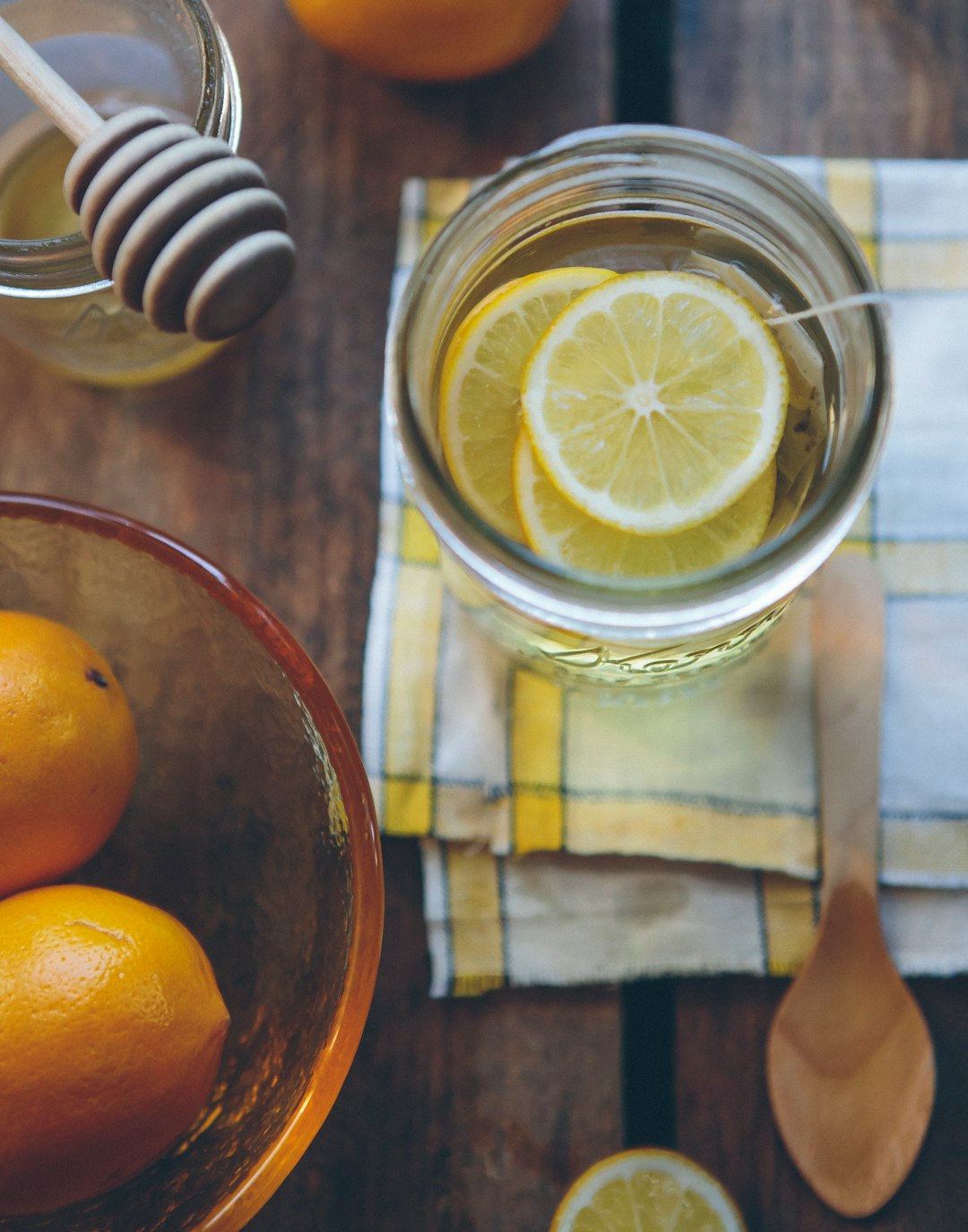
After our deep dive into the world of luxurious teas, it’s clear that these aren’t just beverages — they are living stories steeped in history, culture, and craftsmanship. From the legendary Da Hong Pao with its million-dollar per kilogram status to the delicate sweetness of Silver Needle white tea, luxury teas offer an experience that transcends the ordinary.
Positives of Luxurious Teas
- Unmatched flavor complexity: Each sip reveals layers of aroma and taste shaped by terroir and expert processing.
- Rich cultural heritage: Drinking luxury tea connects you to centuries-old traditions and fascinating legends.
- Exclusivity and rarity: Owning or tasting these teas is a privilege reserved for discerning connoisseurs.
- Health benefits: Many high-end teas are rich in antioxidants and promote wellness.
- Sustainability: Increasingly, luxury teas come from ethical and eco-friendly sources.
Challenges to Consider
- Price and availability: Genuine luxury teas can be prohibitively expensive and hard to find.
- Authenticity concerns: The market is flooded with imitations; buying from trusted sources is essential.
- Brewing complexity: Some luxury teas require precise brewing techniques to unlock their full potential.
Our Confident Recommendation
If you’re ready to elevate your tea experience, investing in luxury teas is absolutely worth it. Start with accessible yet exquisite options like Gyokuro or Tie Guan Yin to hone your palate. When you’re ready, explore rarities like Da Hong Pao or aged Pu-erh through reputable sellers such as TWG Tea, Mariage Frères, or PAPER & TEA.
Remember, luxury tea is a journey — one that rewards patience, curiosity, and appreciation. So brew that perfect cup, savor every drop, and let the stories steep alongside the leaves.
Recommended Links for Tea Lovers and Collectors 🔗🍃
-
👉 Shop TWG Tea on:
Amazon | TWG Tea Official Website -
👉 Shop Mariage Frères on:
Amazon | Mariage Frères Official Website -
👉 Shop PAPER & TEA on:
PAPER & TEA Official Website -
Explore Yunnan Sourcing for Pu-erh and Da Hong Pao:
Yunnan Sourcing Website -
Books for Tea Enthusiasts:
Frequently Asked Questions About Luxurious and Expensive Teas ❓🧐
What are the most expensive types of tea in the world?
The most expensive teas include:
- Da Hong Pao: Known as the “Big Red Robe,” this rare oolong from China’s Wuyi Mountains can fetch prices exceeding $1 million per kilogram for authentic batches. Its rarity and legendary history make it the crown jewel of luxury teas.
- Vintage Narcissus (Shui Xian): An aged oolong from Wuyi Mountains, prized for its deep, evolving flavors after decades of aging.
- Panda Dung Tea: An innovative luxury tea fertilized with nutrient-rich panda dung, producing a unique nutty flavor.
- Tie Guan Yin: A floral and complex oolong from Fujian Province, highly sought after for its delicate aroma and taste.
- Gyokuro: Japan’s shaded green tea, known for its rich umami and sweetness, cultivated with meticulous care.
These teas are often sold at auctions or through specialty retailers and are prized for their rarity, craftsmanship, and cultural significance.
How do I choose the best luxury tea for special occasions?
Choosing the right luxury tea depends on the occasion and your guests’ preferences:
- For formal ceremonies or meditative moments, consider Matcha or Gyokuro for their ceremonial significance and refined taste.
- For celebrations or gifting, Da Hong Pao or Tie Guan Yin offer legendary stories and complex flavors that impress.
- For aged tea enthusiasts, an aged Pu-erh cake provides a unique tasting experience that evolves over multiple infusions.
- Always buy from trusted brands like TWG Tea or Mariage Frères to ensure authenticity and quality.
- Consider the brewing skill level required; some luxury teas need precise water temperatures and steeping times.
What are the health benefits of drinking high-end loose-leaf tea?
High-end loose-leaf teas often retain more antioxidants, polyphenols, and nutrients compared to lower-quality or bagged teas. Benefits include:
- Antioxidant properties: Help combat oxidative stress and inflammation.
- Mental alertness: Caffeine and L-theanine promote focus without jitters.
- Digestive aid: Certain teas like Pu-erh support gut health and metabolism.
- Heart health: Regular tea consumption is linked to improved cardiovascular health.
- Stress reduction: Ritualistic brewing and mindful sipping promote relaxation.
For detailed insights, visit our Health Benefits of Tea section.
Are there any luxury tea brands that offer unique and exotic flavor profiles?
Absolutely! Some luxury brands specialize in unique and exotic teas:
- PAPER & TEA: Offers rare Japanese and Chinese teas like WILD & RAW Pu-erh and ORIENTAL BEAUTY Taiwanese Oolong, known for intense, malty, and fruity notes.
- Mariage Frères: Known for creative blends that combine rare teas with spices and florals.
- TWG Tea: Curates exclusive teas from around the world, including rare white teas and aged varieties.
- Rishi Tea: Focuses on organic and ethically sourced teas with innovative flavor profiles.
Exploring these brands can introduce you to new taste dimensions beyond traditional teas.
How can I ensure the authenticity of luxury teas I purchase online?
- Buy from official brand websites or reputable specialty tea shops.
- Check for certifications such as organic, fair trade, or geographical indications.
- Read customer reviews and look for detailed product descriptions.
- Avoid suspiciously low prices or sellers without verifiable credentials.
- When possible, request sample sizes before committing to large purchases.
Reference Links and Further Reading 📚🔍
- Beyond the Ordinary: Exploring the Most Expensive Teas in the World – Tea Culture of the World
- Luxuries in a Teacup: The World of the Most Expensive Teas – PAPER & TEA
- The 5 Most Expensive Teas In The World – Camellios
- TWG Tea Official Website
- Mariage Frères Official Website
- PAPER & TEA Official Website
- Yunnan Sourcing Official Website
